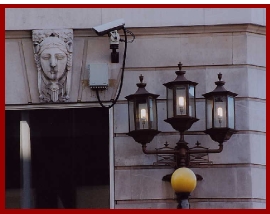| ||||||||||||||||||||||||||||
 | ||||||||||||||||||||||||||||
Welcome to the | ||||||||||||||||||||||||||||
 | ||||||||||||||||||||||||||||
CCTV Camera Output Connections
There are of course a limited number of non standard surveillance cameras that may have combined power / signal connections, or 'network' connectors, but the vast majority still provide an 'unbalanced' Composite Video' signal output through the industry standard BNC twistlock socket. Whilst there are adaptor / convertors that will allow unbalanced (co - axial) video to be converted to 'balanced' twisted pair transmission, there are now also a few cameras appearing on the market which offer 'balanced' video output as standard. Similarly, there is a rapidly increasing number of specialist digital cameras that are designed to be connected straight onto a digital network (either LAN, WAN or Internet), which are generally termed as "IP Video" cameras. Although currently more expensive than their analogue cousins, these units can offer significant cost savings by using existing network cabling already located throughout the building. Although IP Video will become the de facto standard in years to come, Doktor Jon still currently has some key reservations about closely integrating parallel technologies, that may yet prove to be highly vulnerable and indeed corruptible, at the worst possible moment (more about this in the 'Digital' section of the site). In fact, many issues surrounding existing network security, may provide obvious conflicts with the overall integrity of what should be a first line of security defence. Whilst a handful of (mostly domestic) cameras can provide an RF (radio frequency) output for direct connection to a household television, there are also a few models which have a wireless microwave transmitter built in as standard. For various reasons, Doktor Jon would consider wireless as a last resort rather than a first choice, but there's more on this subject in the 'Video Transmission' section of the site. Almost all industrial CCTV cameras will have connections for auto iris lenses, and a relative few are also fitted with a Y/C connector, which outputs seperated colour (chrominance) and video (luminance) signals, but this latter signal connector is becoming increasingly rare due to operational limitations in using a seperated signal. | ||||||||||||||||||||||||||||
 | ||||||||||||||||||||||||||||
IMPORTANT: No material may be reproduced, copied or redistributed from this site, © doktorjon.co.uk 2004 - 2008 Homepage...:...Gateway...:...Technical Gateway....:....Quickfind Index....:....Equipment Directory | ||||||||||||||||||||||||||||

